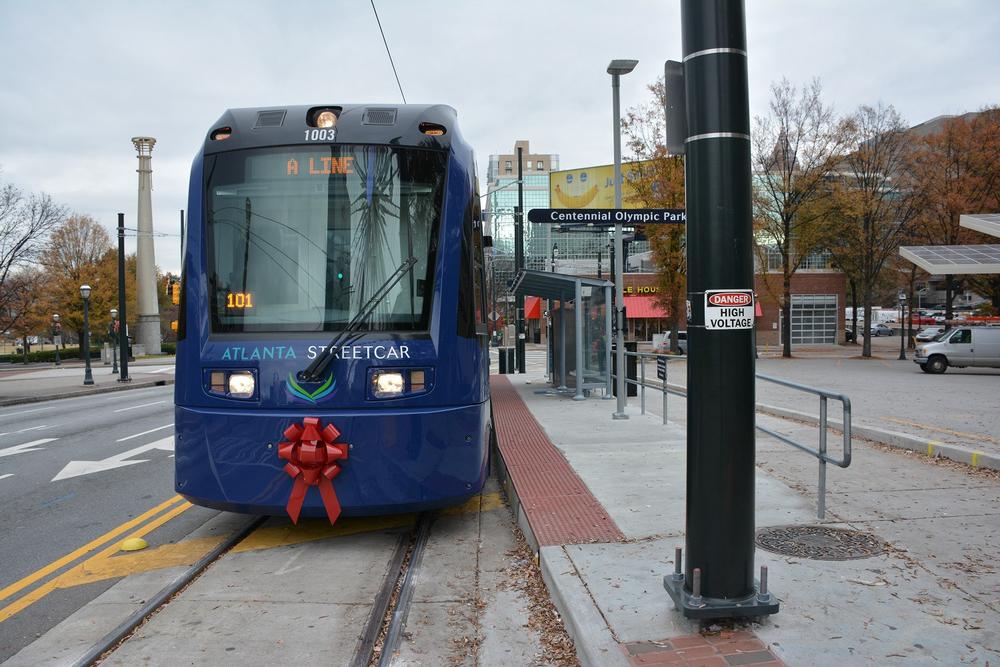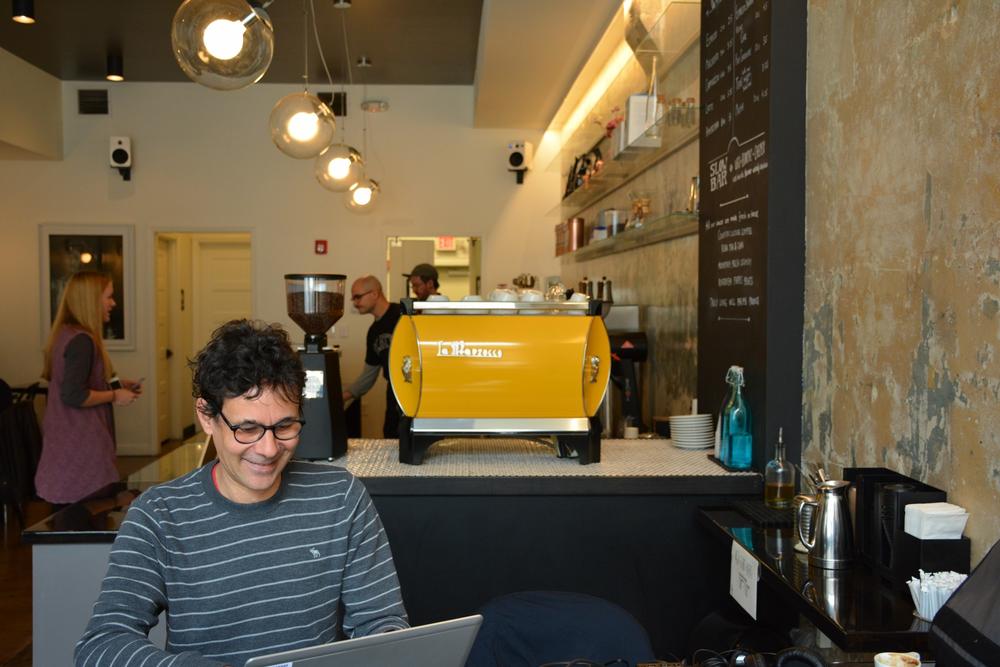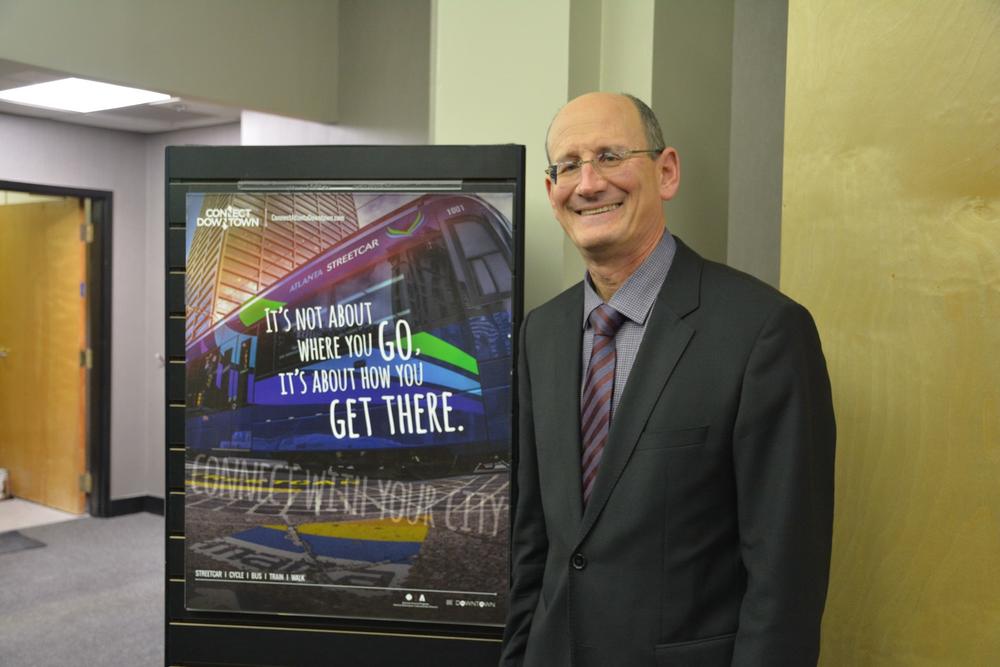Section Branding
Header Content
One Year Of The Atlanta Streetcar
Primary Content
Bright blue streetcars roll up Auburn Avenue in Downtown Atlanta every 15 minutes or so, but from inside Condesa Coffee, you can't always hear them over the sounds of conversation and grinding beans.
Octavian Stan is one of the co-owners of the coffee shop. He said, so far, he’s pretty happy with the streetcar.
“Overall, I think it’s a great addition,” Stan said.
He said it was too early to tell if the streetcar had helped him sell more macchiatos, but not to tell that it had made developers more interested in the neighborhood. Several buildings on Auburn Avenue sat unoccupied, but Stan said he knew of a number of projects planned that would breathe new life into them.
“Once that happens, people maybe will feel more of an urge to get off the streetcar, not just take it from Centennial Park to MLK Memorial and not even look in between,” Stan said.
A.J. Robinson is president of Central Atlanta Progress, a community development group focused on downtown Atlanta and a partner in the streetcar with MARTA and the City of Atlanta. He said the streetcar was drawing people downtown.
“There’s something about the permanency of the tracks,” Robinson said. “When people know that something’s going to happen, people begin to think about, ‘Well, I need to be there. I know it’s not going away.’”
Robinson said the streetcar had brought $671 million in investment to downtown Atlanta between when the project was first announced in 2011 and July 2015. To him, that investment was a sign of the streetcar’s success.
Robinson said he was also impressed by how many people were riding the streetcar, a figure he said could hit 1 million by the end of the first year.
“If we were having this conversation last year to project, I wouldn’t have projected a number that high,” he said.
However, that’s a just a small percentage of the people who could be riding the streetcar. In 2013, Central Atlanta Progress estimated that more than 22 million people lived, worked, and visited downtown Atlanta, and they said that number’s only grown since.
Even if 1 million people ride the streetcar in the first year, that would still be less than 5 percent of the people who could.
Still, Robinson cautioned against making quick judgments about a system that still hadn't been around for a full year.
“The cars last 25 to 30 years, so that’s my timeframe,” he said. “When we have to replace the cars, then we’ll decide whether or not the streetcar was effective.”
The people who ride the streetcar were pretty willing to go ahead and give it a grade, people like Helena Harris, who uses the streetcar to commute downtown.
“I would give it maybe a B or C,” Harris said.
Harris said she likes that it connects to MARTA and that it seems to be good for tourists.
“But I think that it’s not that extensive where it goes, and it’s often not very on time,” she said.
Even with those issues, Harris said she rides the system because it’s free, but that’s soon to change. In 2016, riders will be charged a $1 fare, and Harris wasn't sure she'd keep riding. She said she wasn't sure the streetcar was worth it.
Back at Condesa Coffee, co-owner Octavian Stan worried the issues the streetcar had faced its first year would make it hard for the system to really take off.
“I think this is a problem with the City of Atlanta in general in that some of these things kind of tend to be done with half measures,” Stan said. “They do a good thing, and they don’t finish it.”
There are plans to expand the system in the future to places like the Atlanta BeltLine, but no date set for when that might happen.
Still, Stan said he was willing to wait for the system to grow and improve. He was sure it would have a positive impact on his bottom line, eventually. But as a streetcar trundled up Auburn Avenue outside, Stan said he wished things would just move a little bit faster.






